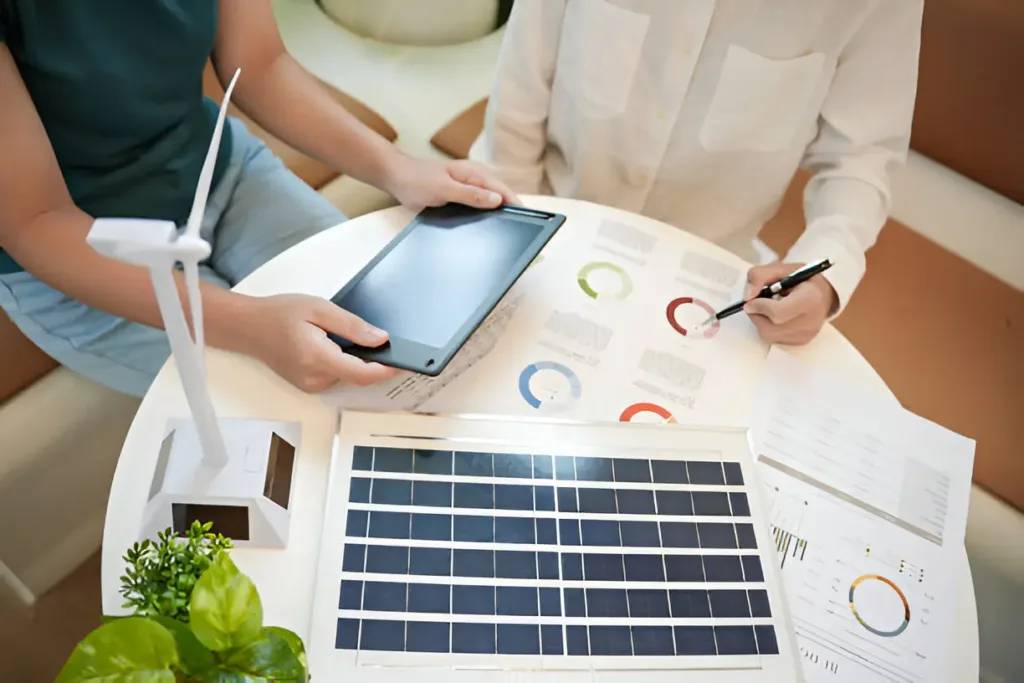As the demand for efficient renewable energy solutions continues to rise in British Columbia, bifacial solar panels are gaining attention for their unique design and performance capabilities. Unlike traditional monofacial options that capture sunlight from one side, bifacials can harness energy from both the front and the rear surfaces. This technology enhances energy generation and offers additional benefits that set it apart in the industry. Let’s explore what bifacial solar panels are, how they work, and their advantages in the unique environment of BC.
What Are Bifacial Solar Panels?
Bifacial solar panels consist of two cells or layers, typically made of crystalline silicon, that are exposed on both sides. This dual-sided design allows them to absorb sunlight directly from the sun as well as reflected sunlight from surrounding surfaces, such as the ground or nearby structures. The concept behind bifacial panels is rooted in maximizing energy capture, making them an appealing choice for various solar installers in BC.
How Do Bifacial Solar Panels Work?
The functionality of bifacial solar panels relies on their ability to capture energy from both sides. Here’s a simplified explanation of their operation:
Direct Sunlight Absorption
Like traditional options, the front side of a bifacial panel absorbs sunlight directly from the sun.
Reflection and Diffusion
The rear side captures sunlight that reflects off the ground or surrounding areas. The reflectivity of these surfaces, known as “albedo,” plays a crucial role in how much additional energy bifacial panels can generate. For instance, lighter-colored surfaces like sand or concrete can increase the amount of reflected light, optimizing the output.
Energy Generation
Both sides convert sunlight into electricity through the photovoltaic effect, where photons from sunlight knock electrons loose from atoms, generating a flow of electricity.
Advantages of Bifacial Solar Panels
Increased Energy Efficiency
One of the primary benefits of bifacial solar panels is their higher energy yield compared to monofacials. Depending on the installation’s design and surrounding environment, bifacials can produce anywhere from 10% to 30% more energy because of their ability to harness sunlight from both sides.
Durability and Longevity
Bifacial panels are often constructed with robust materials that enhance their durability. They typically use tempered glass on both sides, making them more resistant to environmental factors like hail, wind, and UV radiation. This durability can lead to a longer lifespan and less frequent replacements.
Versatility in Installation
Bifacial panels can be installed in various applications. They are ideal for ground-mounted systems, especially in large farms where maximizing land use is vital. Furthermore, their design allows them to be effectively used in vertical installations or on rooftops with high albedo surfaces.
Lower Levelized Cost of Energy (LCOE)
The increased efficiency and durability of bifacial solar panels can lead to a lower levelized cost of energy, making them a more economically viable option over time. They can provide a better return on investment due to their enhanced energy production capabilities.
Aesthetic Appeal
Lastly, bifacials can have a more modern and sleek appearance, often being favored for aesthetic purposes in residential applications. Their dual-side functionality allows for flexibility in design, which can cater to homeowners looking to integrate solar energy into their property without compromising on visual appeal.
Considerations for Bifacial Solar Panels
While bifacial solar panels in BC offer numerous benefits, there are some considerations to keep in mind:
- Installation Costs: The initial costs can be higher than traditional options. However, the long-term energy savings may offset these initial investments.
- Site Conditions: The effectiveness is influenced by the albedo of the surrounding areas. Sites with dark surfaces may yield lower additional energy from the rear side.
Work with Solar Installers in BC
Bifacial solar panels represent a significant advancement in technology, providing enhanced efficiency and increased energy production by utilizing both sidesl. Their unique design, durability, and potential for higher energy yields make them an attractive option for various applications. As the industry in BC continues to evolve, bifacial panels are likely to play a pivotal role in sustainable energy solutions, contributing to the global transition toward renewable energy sources. For anyone considering green energy, exploring bifacial options could lead to a brighter and more efficient outcome.
Also Read- Exploring Fibreglass Pools: Which One is Right for You?
